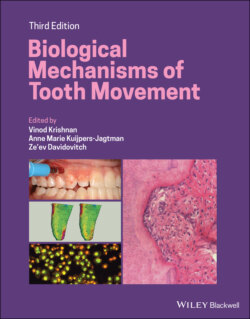Читать книгу Biological Mechanisms of Tooth Movement - Группа авторов - Страница 11
Оглавление
Preface to the First Edition
The first international conference on the biology of tooth movement was held in November 1986 at the University of Connecticut, under the leadership of Louis A. Norton and Charles J. Burstone. In the Foreword to the book that emanated from that conference, Coenraad F.A. Moorrees, to whom the first edition of this book is dedicated, wrote:
Notwithstanding continued progress from numerous histologic and biochemical studies describing tissue behavior after force application, the key question on the biology of tooth movement remains unresolved: namely, how force application evokes molecular response in the cells of the periodontal membrane. Only when this fundamental question in bone physiology is better understood can appliances for optimal tooth movement in orthodontics be achieved.
In the two decades that have passed since that conclusion, scientists worldwide seem to have followed the direction pointed out by Professor Moorrees. Basic research pertaining to the response of tissues and cells to mechanical loading has grown broader and deeper. The emphasis at the end of the first decade of the twenty‐first century is on molecular biology and molecular genetics. Genes are being identified which seem to play important roles in the response of paradental cells and tissues to orthodontic forces, and a growing number of signal molecules that modulate this process have been elucidated. These findings now enable clinicians to utilize some of these molecules as markers of processes associated with tooth movement, such as inflammation and root resorption.
This unrelenting increase of knowledge in basic science has not yet resulted in the development of orthodontic appliances that can be tailored to fit the biological peculiarities of individual patients. But with the growing understanding of the nature of various common diseases, such as diabetes, asthma, arthritis, obesity, and various cardiovascular diseases, it is now possible to assess their potential effects on orthodontic tooth movement, clinically and molecularly. The time seems to be approaching when the nature of optimal orthodontics will be fully exposed as a consequence of the increasing widening of the highway connecting clinical and basic sciences.
The goal of this book is to inform orthodontic students as well as practitioners on the known details of the biological aspects of tooth movement. We hope that this information will enhance their ability to render excellent treatment to all of their patients, young and old. Moreover, we hope that this compendium will convince readers that the dentofacial complex is an integral part of the complete human body, and as such, and like any other region of the body, is prone to be influenced by many factors, genetic or environmental.
Vinod Krishnan Ze’ev Davidovitch Editors
